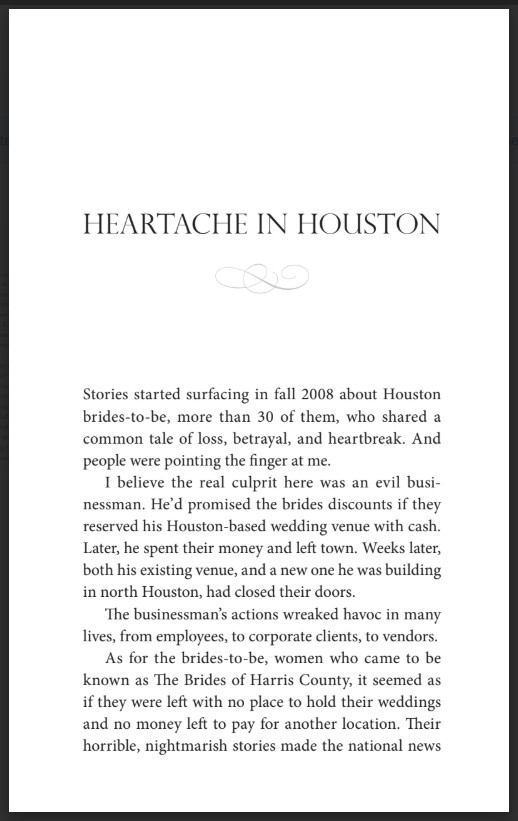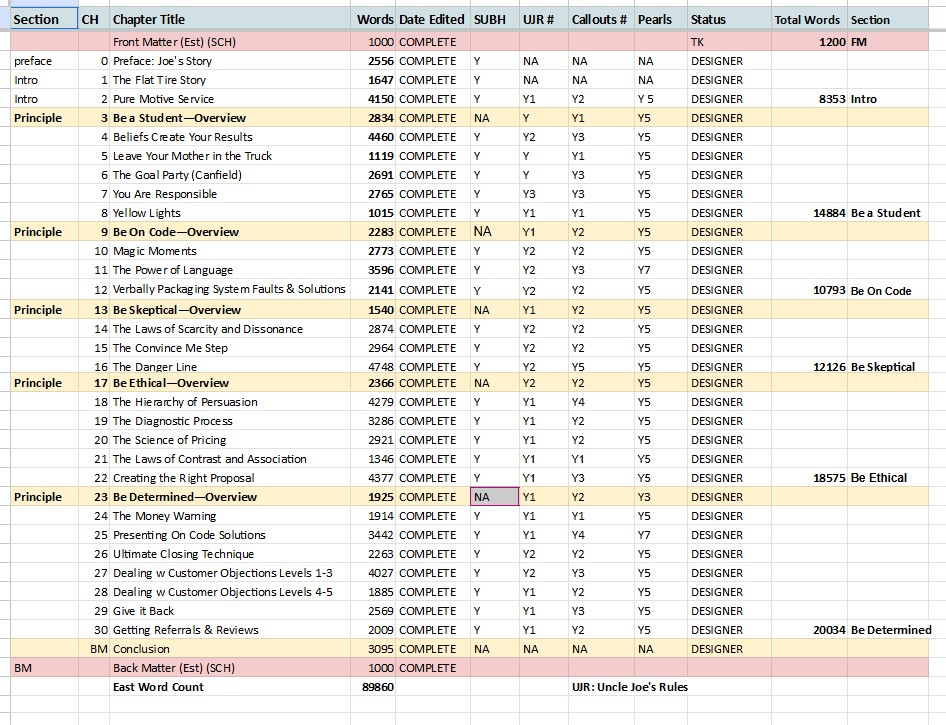Have you watched the survival reality series Alone?
In it, ten people self-record their attempt to survive alone in the wilderness for as long as possible. Except for visits by a medical team, the participants are completely isolated from other humans.
I’ve been glued to the show every evening after work over a bubbling pot of dinner, a glass of wine, and the sounds of family life mingling together in the background. I wouldn’t last a night out there.
The thing is, while the participants in Alone experience isolation, they’re very much connected by a shared goal. Each hopes to outlast the others and win the $500,000 grand prize.
They endure alone, without knowing how the others are doing. One by one, they tap out after three days, or three weeks, or three months, until two participants remain. Finally, a single competitor is crowned the winner. (To date, the record is 100 days.)
While publishing isn’t nearly this harsh, there’s a parallel between business book authors and Alone contestants. Authors may build their books solo – or with the help of a ghostwriter – but they aren’t really working in isolation.
They’re connected to other authors out there who are working hard toward the same goals. Most business authors want to share their knowledge, boost their reputation, and win the attention of readers.
So it’s not enough to write a book. You need to build a better book to stand out and impact people.
That’s why I’ve been reading Josh Bernoff’s Build a Better Business Book. Josh was once the senior vice president of Idea Development at Forrester Research. Today he’s a business book ghostwriter who shares his process and organizational approach in his latest release.
Here are six takeaways from Josh’s book.
1. A better business book solves a problem.
A business book is a big story about how to solve a problem. Define the problem and your unique solution that sets you apart. Prompt yourself: “This will be the first book that . . .”
Write chapter objectives to focus your writing. Every chapter should answer a question. Consider for your readers: “After reading this chapter, you will be able to . . .”
Then create modular parts and sections containing five elements:
- Ideas and frameworks
- Stories, case studies, and examples
- Argumentation and reasoning
- Proof points
- Advice and how-tos
A methodical approach ensures that your business book progresses efficiently from defining a problem to presenting and supporting your unique solution.
2. A better business book tells stories.
Business books are stories.
Humans love stories. Stories engage readers and fuel ideas that matter.
People need your facts, data, reasoning, and advice to be convinced. But they also need stories threading throughout your book like they need connective tissue. Stories help them relate, remember, and step into action.
Here are some sources of inspiration for your stories:
- Your experiences
- Client experiences
- Vendor case studies
- Online stories
- Other business books
- Networking
- Trusted colleagues
- Social network
- Hypotheticals
Taking the time to develop stories in your business book will set you apart.

The dramatic opening story in Roger Igo’s first book, Keep On Going, details the lowest point in his career and sets the stage for his big comeback.
3. A better business book involves serious fact-checking.
Josh says, “When I tell people I’m a writer, they often ask if I write fiction. I reply, ‘Not on purpose.'”
It’s funny but true. Fair or not, one unsupported fact can undermine your entire argument in a business book. Unfortunately, worthy authors and ideas have been dismissed due to sloppy research.
It’s important to check your citations meticulously. Your material needs to hold up to scrutiny.
Here are five ways to check your data:
- Contact people who provided quotes.
- Check that websites are still current.
- Ensure all citations align with a style book, such as The Chicago Manual of Style.
- If you have many citations, consider chapter endnotes to support ideas without disrupting your readers.
- Hire a fact checker. (Ask your proofreader if this task is included in his/her role.)
Authors are understandably exhausted by the time they finish their manuscripts. But don’t give in to the temptation to skip this step. As Josh points out in his book, what’s another nine hours of checking citations when you’ve already invested hundreds of hours in your manuscript?

Bill Herrington’s book, The Green Real Deal, contains more than 300 citations supporting his research on U.S. energy policy.
4. A better business book relies on tools and systems.
Authors have at their fingertips many tools and systems to manage the monumental task of writing a book.
I like the simplicity and file control of Microsoft Word. You can use Styles and formatting features to communicate the hierarchy of your text to your book designer. Define a naming system for your files, like bbbch07planningd1eb. (That’s Josh’s book title initials, chapter number, chapter title, version number, and editor.)
I also like the ease of sharing and the version history of Google Docs. The ability to restore former versions of my work has saved me a couple of times.
Scrivener lets you quickly see the areas of your book that are underdeveloped.
Evernote lets you and your team collect bits of research over time in one place. You can tag content with keywords for easy sorting.
Excel can hold spreadsheets of your chapter outline and word counts.
Notion coordinates teams and processes.
Use whatever tools and systems work best for you.

A peek at the outline and word counts of Joe Crisara’s business book, What Should We Do?, by co-writer and book strategist Helena Bouchez of Executive Words.
5. A better business book features a compelling cover.
A good book cover is deceptively simple. It takes thoughtful collaboration, market research, and creative trust to create a compelling design.
Here are some of the aspects I explore with an author and my team for every book cover:
- Who is the author?
- What is the purpose?
- Who is the audience?
- What are the book specifications?
- What sets apart this author and idea?
- What tone does the author want to convey?
- What emotions should readers feel?
- What colors and elements does the author like and dislike?
- What covers are trending in this industry?
- What covers does the author admire?
- What are other inspirational points of reference?
All of these aspects are included in a cover design brief that equips book designers to develop the best possible covers.
6. A better business book author is just as systematic about marketing as writing.
Josh spends as much time in his book debunking marketing myths as I do with my authors. And for good reason. Book marketing can be overwhelming, and authors are vulnerable in this area.
Here’s a quick list of dos and don’ts in book marketing.
- Don’t assume your book will fly off the shelves. Outside of your friends, family, and colleagues, you’ll have to work for each sale.
- Do anticipate that book promotion is hard work and a long game. The marketing landscape has lots of aspects, and there are no shortcuts.
- Don’t assume a traditional publisher will promote your book well. In a poll, Josh found that nearly every traditionally-published author was disappointed with the marketing and publicity efforts for their books. Whether you’re self-publishing or traditionally publishing, marketing is primarily your responsibility.
- Do consider the three most popular book marketing tactics: book cover endorsements, online reviews, and speaking engagements.
- Don’t jump for bestseller programs without understanding what’s involved. They’re companies with hefty price tags that place bulk orders at many retailers to create the illusion that your book is in demand. You might manipulate your way onto the New York Times list, but the tactic is expensive, risky, and unsustainable.
- Do identify your strengths. Pick a few things you’re good at and leverage your resources to maximize your time and budget.
- Don’t feel forced into a tactic you don’t enjoy. If you hate speaking, don’t do it.
- Do give away your best information. It feels counterintuitive, but better business books offer generous insights. The point is to compel people to hire whoever created that goldmine of information. Ask yourself if you’re giving enough away.
Final thoughts
Writing a business book is hard. Writing a better business book is even harder. It takes thoughtfulness in every detail.
But it’s equally rewarding. Josh found that 87% of authors agreed that writing a book was a good decision. And 67% plan to write another book within 10 years.
So if you’ve got a business book idea, know that you’re not working alone. You’re among many authors aiming for a shared goal. Commit to the harder work of building a better business book – and reap the greater rewards!
Ella Ritchie is the founder of Stellar Communications Houston, the “missing piece” in premium, end-to-end nonfiction publishing, marketing, and PR team for self-publishing memoirists, business leaders, nonprofits, families, and corporations. Subscribe to the blog at https://stellarwriter.com/blog.
